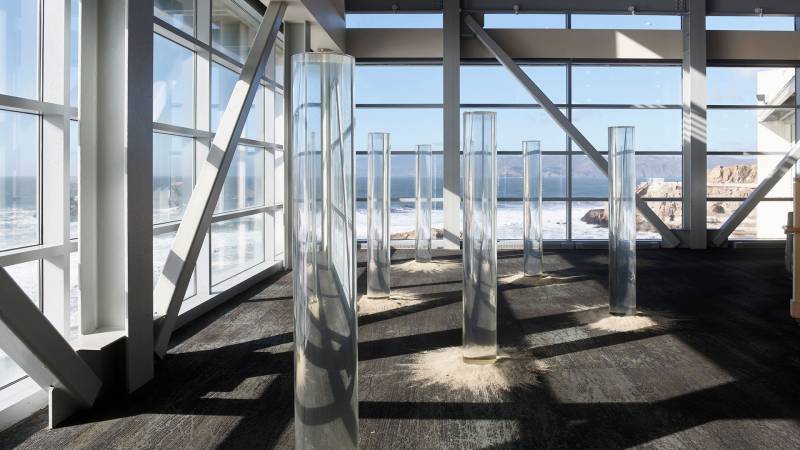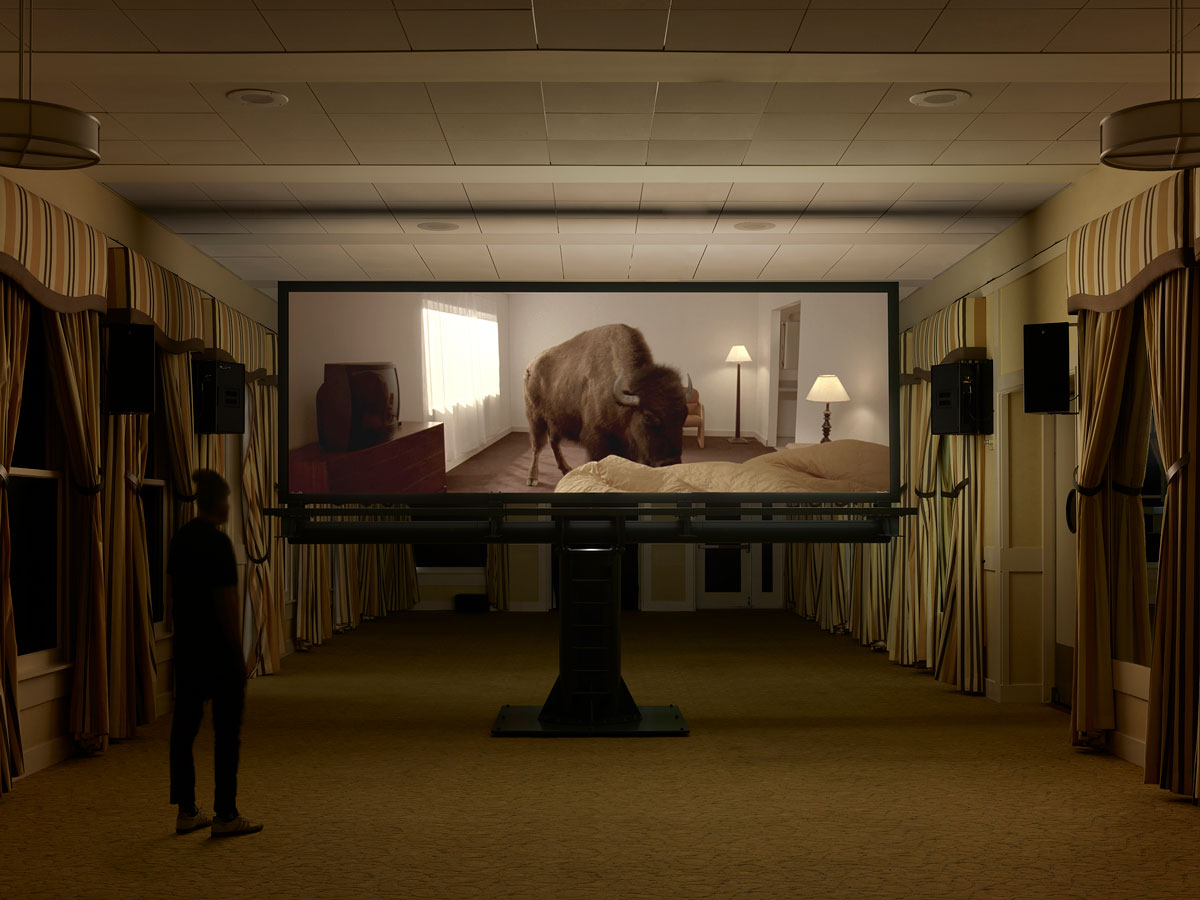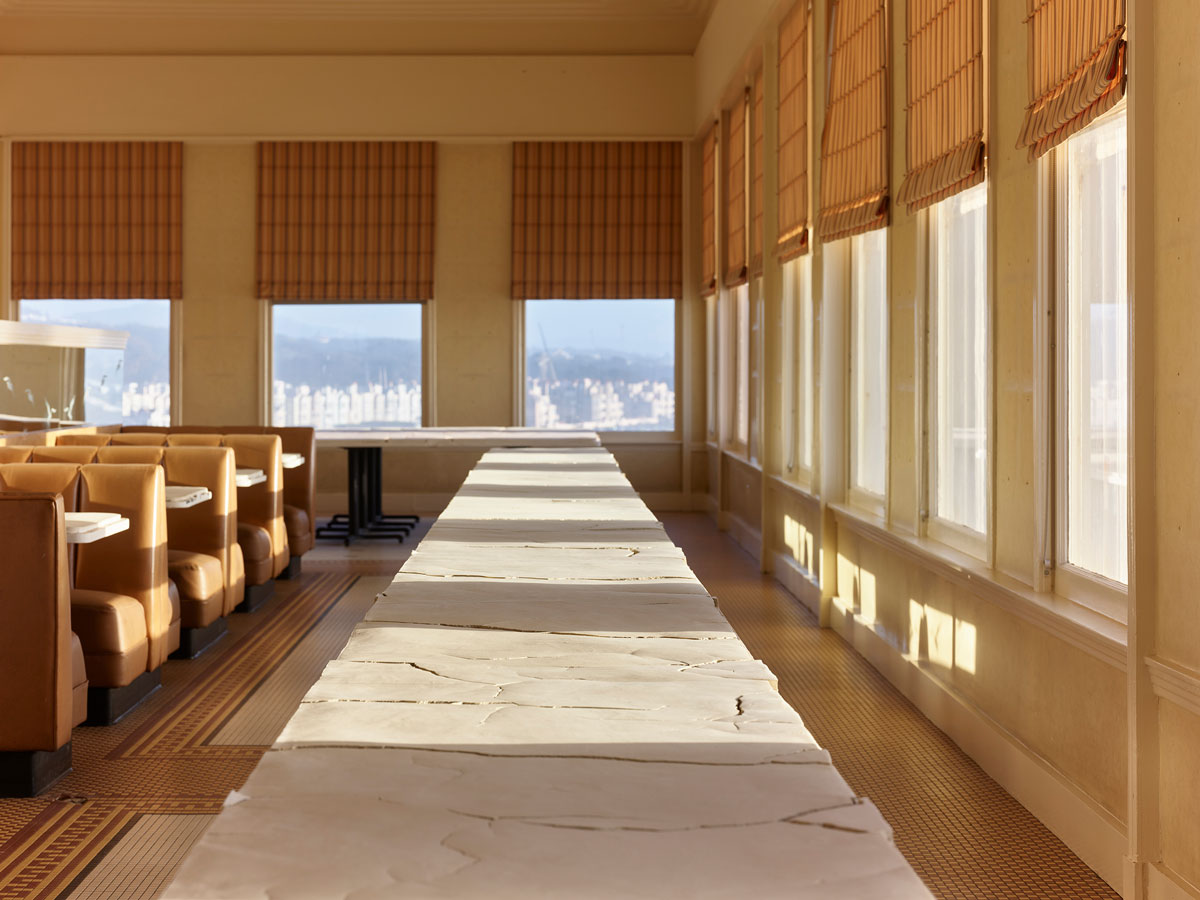At the bottom of the Cliff House basement, Jana Winderen’s sound sculpture Energy Field emits the howl of someone, or something, in pain. Ravens air their grievances. Ice floes shriek and break apart as they melt into the ocean. Trees moan and buckle against merciless weather. Winderen’s collection of voices (or vocalizations) from nature encapsulates the larger theme of FOR-SITE’s exhibit Lands End. The concept of “Weltschmerz,” loosely translated as the “world pain,” is featured in nearly every reclaimed room.
When the Cliff House closed at the end of 2020, it seemed unlikely that, within a year, the building would be repurposed as a temporary museum. But FOR-SITE announces its singular approach to curation in its tagline: “art about place.” The Golden Gate National Parks Conservancy agreed to host the foundation’s exhibit through the end of March 2022. High atop a cliff on the city’s shoreline, the Cliff House offers views of the ocean from every vantage point.
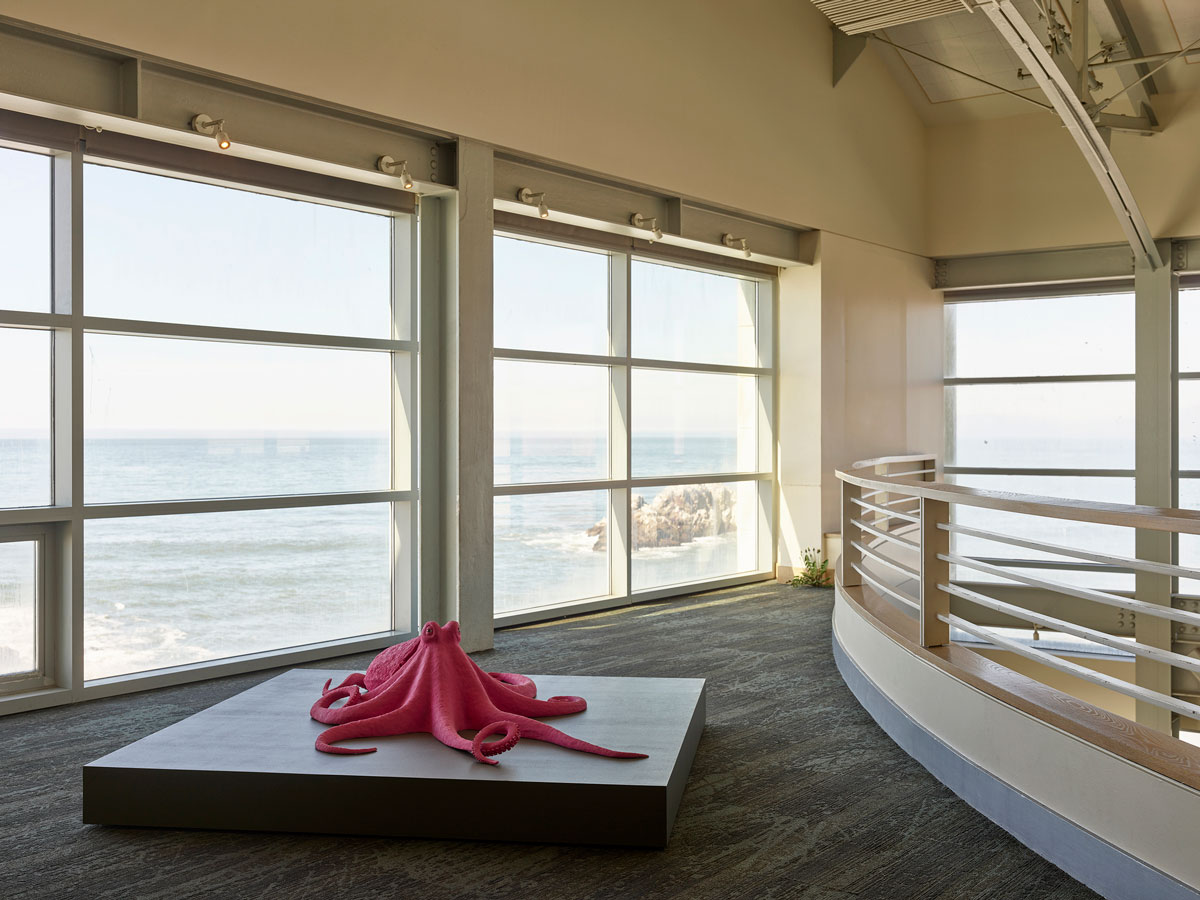
Lands End capitalizes on both its setting above the Pacific and the decaying building itself. Days before the exhibit opened, the first rainstorm of the season caused some damage; when I visited, several ceiling panels were water-stained or in the process of being replaced. While one of the curators worried another storm was due to arrive, I found the rusting doors and smell of dampness worked in concert with the show. Together, site and artwork communicate an ongoing tragedy—the suffering of Planet Earth at the hands of mankind.
While there are whimsical and nautical subjects competing for attention, the dark basement steps leading down to Winderen’s discord and fury alter the reception the sunnier displays. I fell in love with Carsten Höller’s purple-colored polyurethane Octopus, sprawled out on a platform like a cuddly, domestic, animal pal, only to recall that humans are destroying its natural ocean habitat (can an octopus howl?).
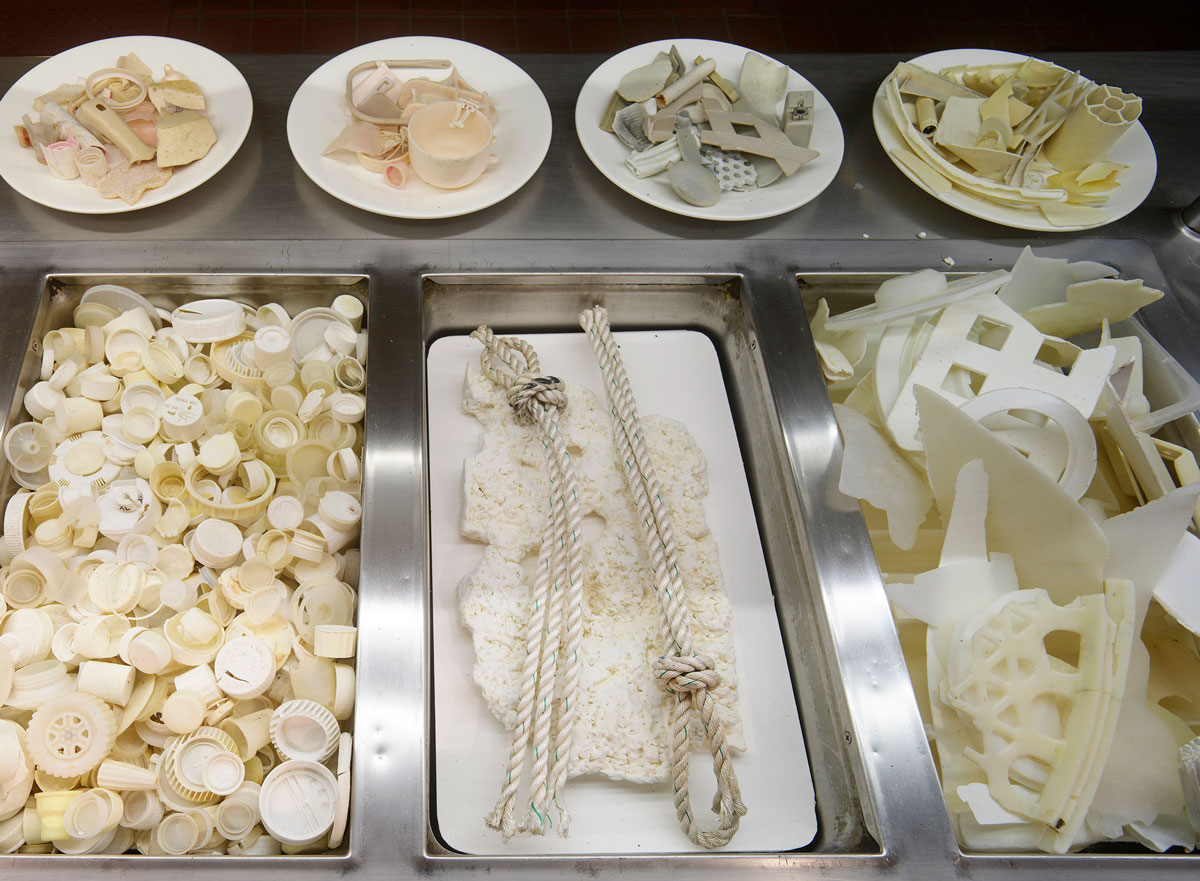
That point is underlined in for here or to go, Richard Lang and Judith Selby’s remarkable set piece. Housed in the Cliff House’s defunct kitchen, the artists, a husband and wife team who call themselves One Beach Plastic, have been collecting detritus for decades along the Point Reyes’ shoreline at Kehoe Beach. For a few seconds, I stood outside the kitchen looking at a variety of objects that seemed out of place. I could see that the staging areas were covered in plates and bowls and jars, all of them overflowing—it looked like a kitchen prepped for a lunch rush.
